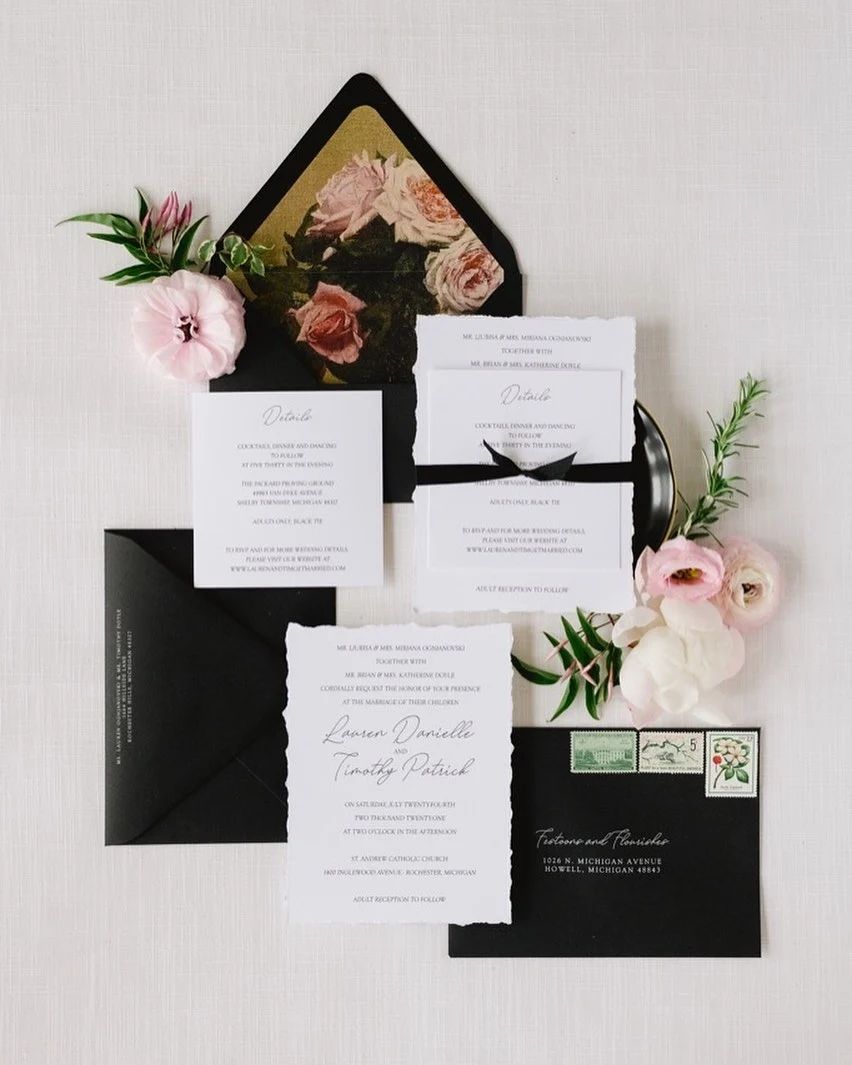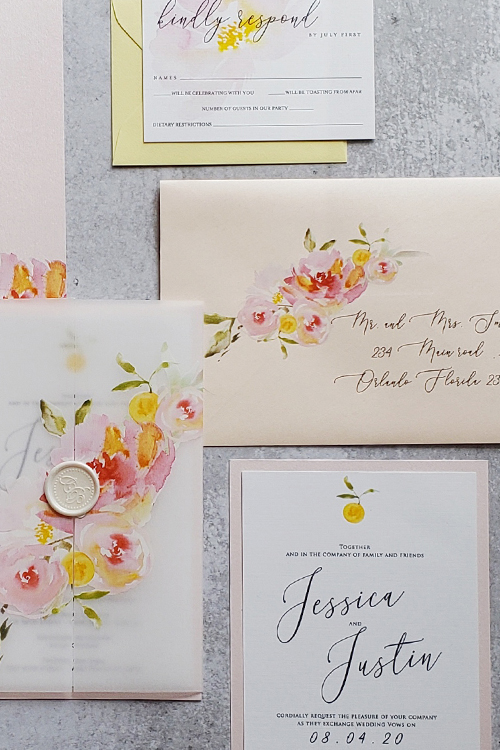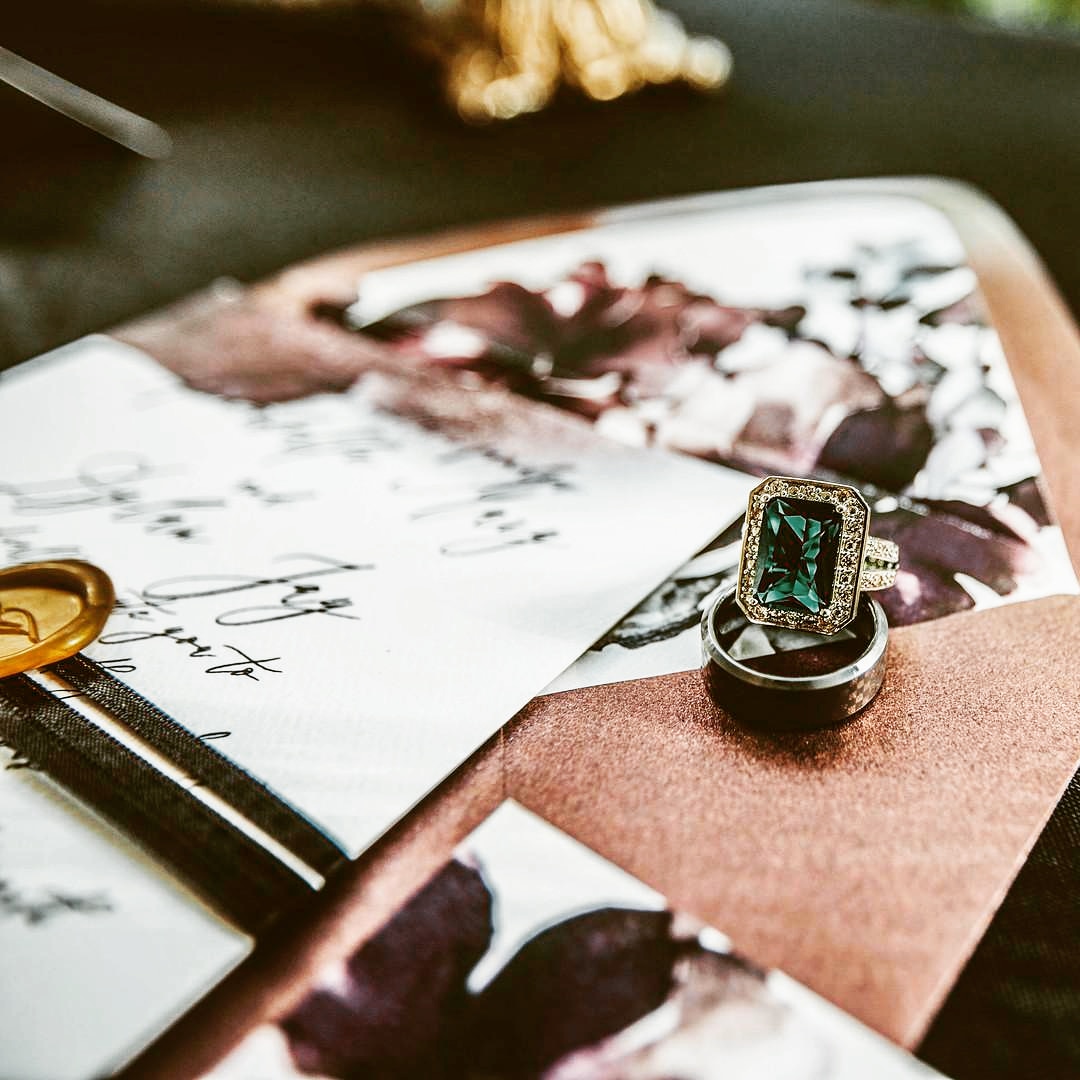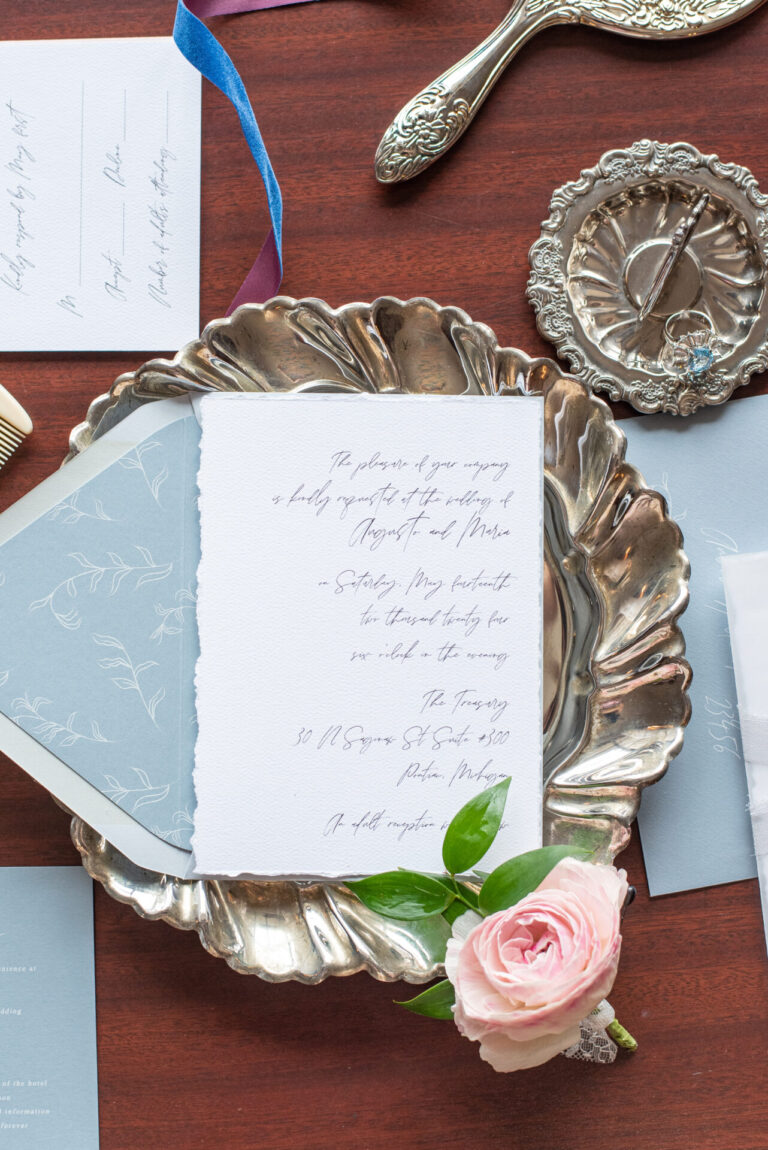White Ink on Dark Envelopes: An Elegant Choice with Mailing Challenges
White ink on dark envelopes has quickly become a popular choice for wedding invitations and special events due to its stunning, high-contrast look. The crisp, clean appearance of white ink against deep hues like black, navy, or forest green makes a bold statement and lends a modern, sophisticated touch to any stationery suite. If you’re considering this style for your event, understanding both the printing process and mailing considerations will help you make the most of it.
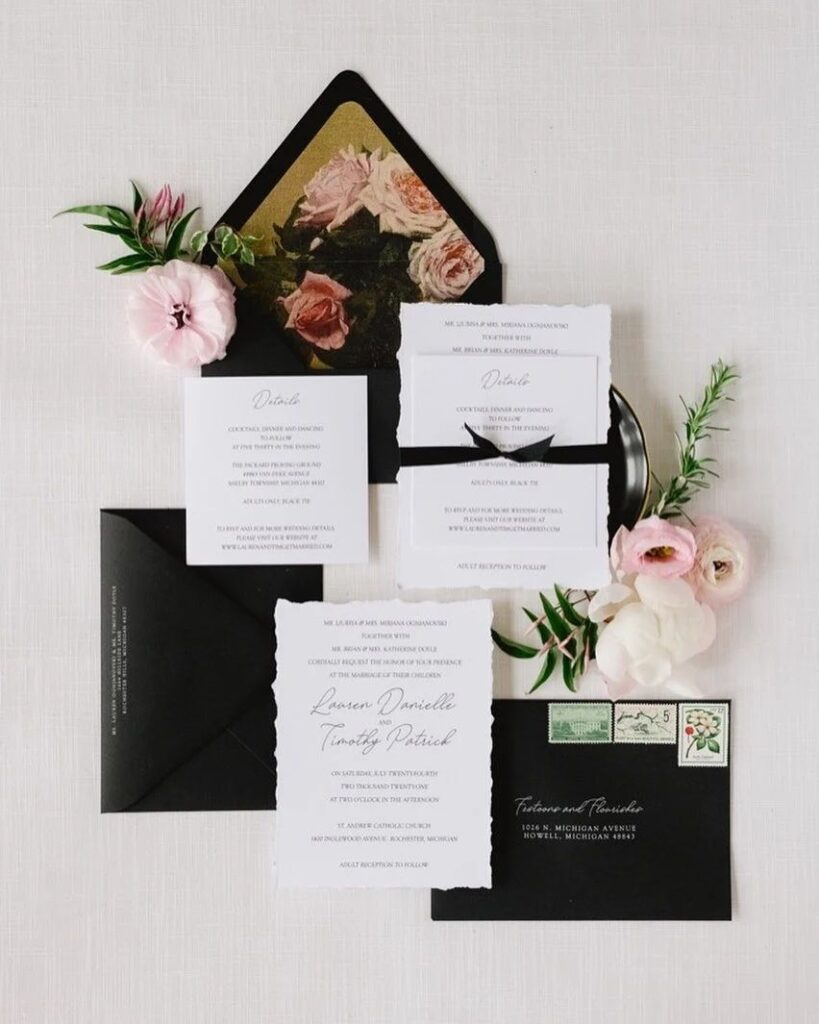
How White Ink on Dark Envelopes is Printed
Using a specialized white ink printer that includes both CMYK and white ink capabilities allows for smooth and precise printing on dark envelopes. Unlike traditional printers, which assume a white background, this technology applies a dense layer of white ink to dark surfaces, creating vibrant, opaque designs that pop against the background. This is ideal for creating detailed, high-quality images, logos, and text that stand out beautifully on darker shades of paper.
Mailing Challenges with White Ink on Dark Envelopes
While white ink on dark envelopes is visually striking, it can create complications when mailed. Here’s what you should know:
- Non-Machinable Status: The U.S. Postal Service (USPS) relies on automated processing machines designed to read dark text on light-colored backgrounds. Dark envelopes with white ink are often categorized as “non-machinable,” meaning they don’t meet the criteria for automated sorting and need to be handled manually.
- Manual Sorting: Because they are non-machinable, these envelopes require manual processing, which means that a postal worker must sort them by hand. This adds significant processing time, especially if mailing a large batch, and can lead to considerable delays, particularly during peak mailing seasons.
- Longer Transit Times: Manual handling often results in slower transit times, with some envelopes taking extra days—or even weeks—to arrive. This makes it important to factor in additional time when mailing wedding invitations or other time-sensitive correspondence in dark envelopes with white ink.
- Increased Mailing Fees: Non-machinable mail generally incurs additional postage fees due to the need for manual handling. These fees vary depending on location and weight, but it’s wise to check with your local post office for specific costs before mailing.
Tips to Address Mailing Issues
For those set on using dark envelopes with white ink, here are some strategies to help ensure smooth delivery:
- Use an Outer Envelope: A practical way to avoid issues is by using a light-colored outer envelope for mailing, with the dark, white-ink envelope as a decorative inner layer. This allows for easy reading of addresses by postal systems while preserving the stylish impact of your dark envelope.
- Allow Extra Mailing Time: Because non-machinable mail requires manual sorting, it’s best to factor in additional time for delivery. This helps ensure your invitations arrive on time, especially for weddings and other time-sensitive events.
- Ensure Adequate Postage: Non-machinable envelopes typically incur additional postage fees. Be sure to confirm the correct postage amount with your local post office to avoid delays due to insufficient postage.
From Our Experience with White Ink on Dark Envelopes
Based on our experience working with white ink on dark envelopes, the mailing process can vary widely, sometimes going smoothly and other times encountering delays. Here’s what we’ve observed:
- Seamless Processing: In some cases, these envelopes make it through postal sorting machines without any issues. The automated systems read them successfully, and the processing is quick and efficient, with delivery times aligning with typical mailing expectations.
- Manual Processing Pile: Other times, however, these envelopes are set aside for manual handling because they don’t meet the “machinable” criteria due to the contrast of white ink on a dark background. When this happens, a postal worker manually picks them up to process them further. In some cases, the postal worker applies a white sticker in the lower right corner of the envelope, creating a space where a barcode can be printed to enable automated processing.
- Zip Code Manual Entry: Alternatively, a postal worker may enter the zip code manually for the envelope to continue on its route. Although this approach is effective, it generally results in longer delivery times. Based on our observations, these envelopes can take anywhere from 1 to 3 or even 4 weeks to arrive at most U.S. destinations.
- Increasing Delays: Over the past couple of years, we’ve noticed that the delays have become more frequent. With increased volume in postal processing, particularly during peak seasons, non-machinable envelopes are more likely to experience slower manual sorting and longer delivery times.
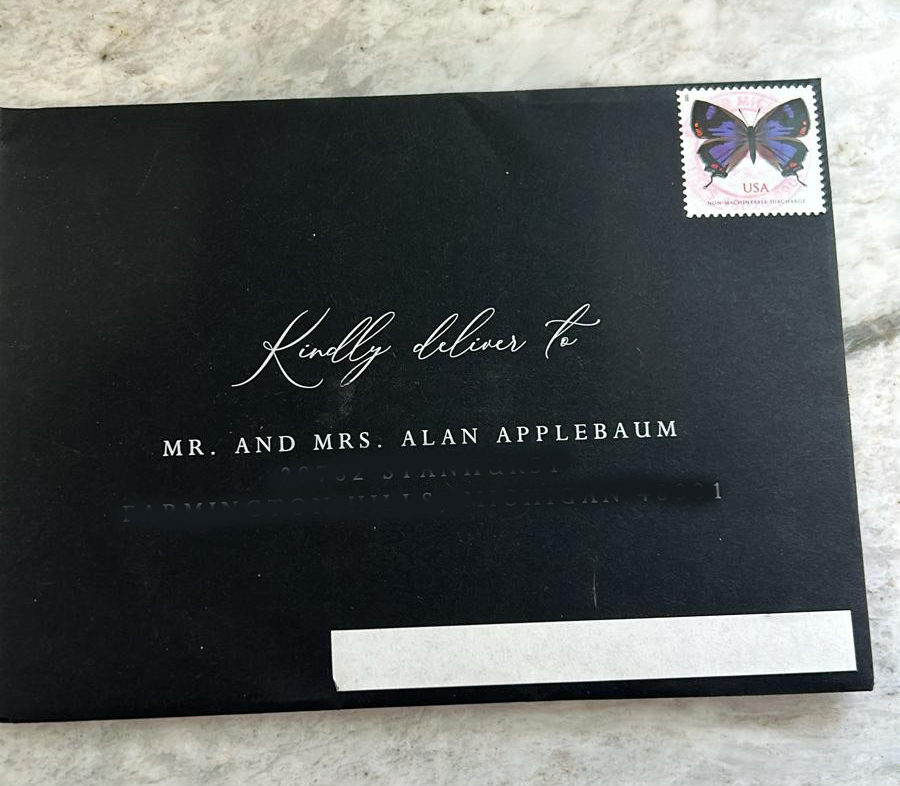
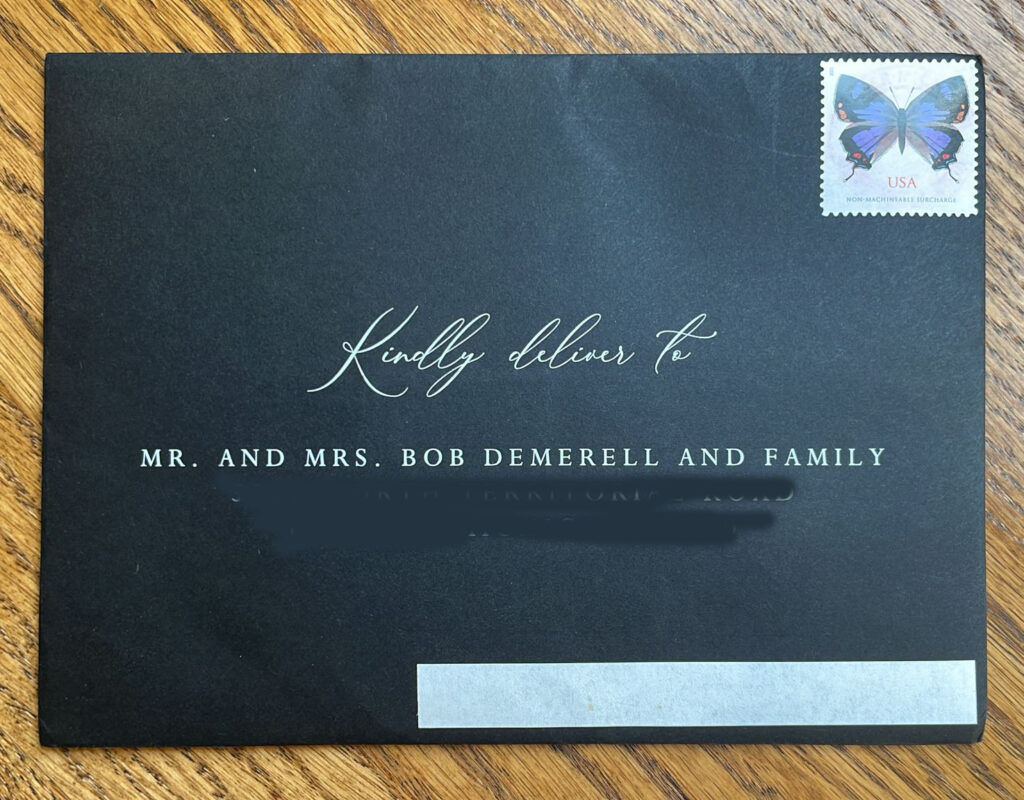
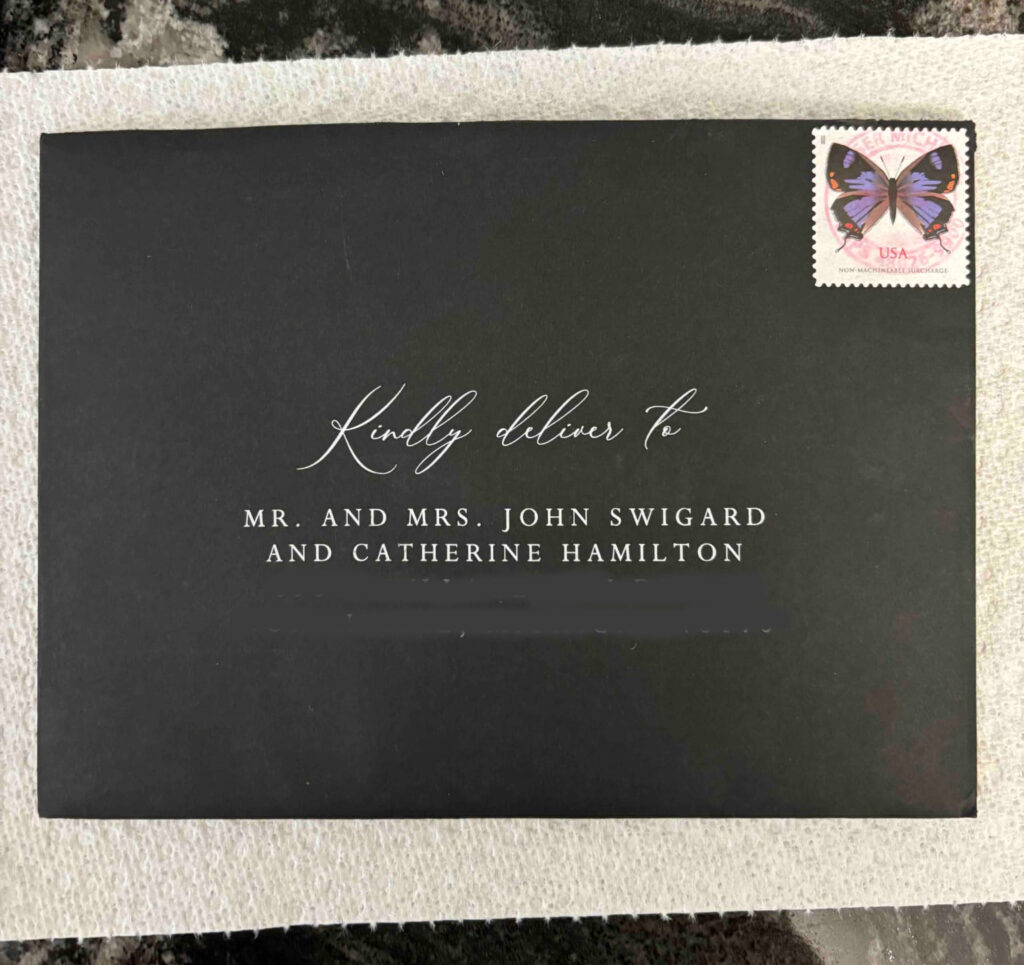

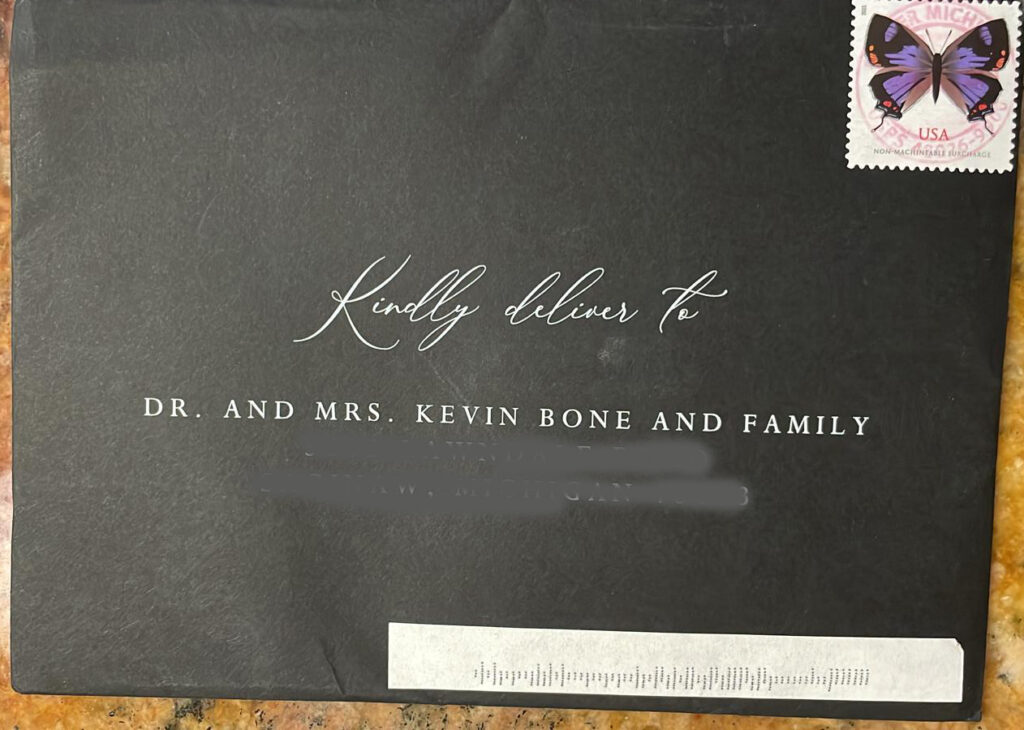
White ink on dark envelopes can make a stunning impression, but understanding these potential mailing challenges can help set realistic expectations for delivery.
Final Thoughts
Choosing white ink on dark envelopes adds elegance and personality to wedding invitations and event stationery, making a memorable impression. By understanding the limitations and working within postal guidelines—such as adding an outer envelope—you can enjoy the beauty of white ink on dark backgrounds while ensuring your invitations reach their destination on time.

